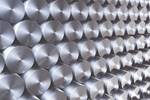Steps for Determining Better Mold Prices
Improving your mold pricing requires a deeper understanding of your business.
A solid understanding of the proper way to price molds can increase revenue and profits and improve customer relations and forecasting. Photo Credit: ThinkStock
Pricing is a critical step in the mold building process that does not get the attention that it deserves. Shops use several methods, and some are more effective than others. A solid understanding of the proper way to price molds can increase revenue and profits and improve customer relations and forecasting. While no magical solution fits all companies in every market, you need to be aware of the following key considerations:
Pricing Plan
The first step in establishing the proper price for a mold is understanding your business by identifying all of the costs associated with operating the business. This includes costs associated with making the mold or molds that you are pricing and any additional costs associated with the project, such as shipping or sampling. A thorough comprehension of internal processes, capacity and the value statement that you offer are also essential.
Once you establish an accurate picture of the costs incurred and the value that you offer, it is then necessary to look outward. You should use benchmarking and competitive analysis to establish the value that other companies offer and the price that they are charging for that value. Awareness of the needs of your customers, the abilities of your vendors and the overall economic climate are important elements of which to be aware as well.
The most significant point to remember is that all of these things can change. If your current pricing model is from the 1980s, there is a good chance that it is irrelevant and potentially causing harm to your operation. Constant monitoring and re-evaluation are the only ways to ensure that the data that you are using to arrive at the price is accurate.
There are several ways to use this information to price a mold project. Regardless of which pricing approach you use, the proper price should cover the costs necessary to complete the project, reflect the value that you are offering to your customer and allow for a profit. Opportunity cost must also be a part of the equation. If you win the project that you are pricing, evaluate how that affects your shop’s capacity and its ability to win other projects or complete other molds.
Constant monitoring and re-evaluation are the only ways to ensure that the data that you are using to arrive at the price is accurate.
Common Pricing Pitfalls
Other errors that companies make when pricing include chasing sunk or irrelevant costs, setting prices solely based on experience, setting prices solely based on competition and improperly using discounts. It is important to ensure that the revenue that you generate from building molds is sufficient to cover all of the costs associated with running the business. However, rigid pricing models that force the inclusion of factors like unused capacity run the risk of creating profitable job loss. This model could lead to more unused capacity, which forces higher prices and eventually causes a death spiral in the demand for your molds.
Pricing based solely on gut feelings, hunches or “because this is the way we have always done it” is another recipe for errors. Experience is a plus when it comes to formulating how much to charge. However, you should not base prices on statements like “this should take two months.” Instead, you should use data to review historical times for similar projects and processes. This provides support for, or potentially tests, the theory of the hunch and facilitates greater confidence in the price.
The prices that other mold builders are charging is a very important consideration. Only using industry standards or market pricing without understanding internal costs and value could lead to poor pricing. The comparison must be apples to apples. For example, consider lead time and quality. If these two factors are not the same, then the price must reflect the difference.
Discounting can be a very valuable tool when you use it properly. Offering discounts is a part of marketing, similar to social media or print advertising. It is an expense that, which on its own, reduces profit. You must measure the return on investment on the discounts that you offer to win new business. Discounts can also be an important part of negotiations. However, you must match price decreases to service decreases or differences. If a customer needs a specific dollar amount, you must work with them to see what changes to design, volume purchasing, lead time, material or tolerances can be made to save money. Strictly reducing price is rarely the right thing to do, especially if you determined the original price using these other steps.
The final step in pricing is to evaluate the relationship of forecasted costs to actual costs through and after the mold building process. If actual costs diverged from estimated costs, then research is required to identify the reason and to take corrective action. You can then use the information that you have acquired for future pricing.
Regardless of which pricing approach you use, the proper price should cover the costs that are necessary to complete the project, reflect the value that you are are offering to your customer and allow for a profit.
Increasing revenue and reducing costs are two ways to improve profit. A robust pricing strategy can help with increasing revenue by growing incremental income per mold or by stimulating the sale of more molds. It is vital not to lose focus on reducing costs wherever possible. Often, raising the price is not the right answer. Eliminating waste and improving the process is.
Related Content
MMT Chats: Acquisition Trends and Lessons for Mold Builders
Jim Berklas is a former full-time M&A lawyer for several of the largest private equity firms in the country and has 25 years of M&A experience and 200 closed transaction. Today, he is founder and M&A Leader with Augmented Industry Services. He joins me for this MMT Chat on mergers and acquisitions trends and strategies within in the mold manufacturing industry. This episode is brought to you by ISCAR with New Ideas for Machining Intelligently.
Read MoreWomen Impacting Moldmaking
Honoring female makers, innovators and leaders who are influencing our industry's future.
Read MoreOEE Monitoring System Addresses Root Cause of Machine Downtime
Unique sensor and patent-pending algorithm of the Amper machine analytics system measures current draw to quickly and inexpensively inform manufacturers which machines are down and why.
Read MoreFrom Injection Mold Venting to Runnerless Micro Molds: MMT's Top-Viewed June Content
The MoldMaking Technology team has compiled a list of the top-viewed June content based on analytics. This month, we covered an array of topics including injection mold venting, business strategies and runnerless micro molds. Take a look at what you might have missed!
Read MoreRead Next
What You Should Consider When Purchasing Modified P20 Steel
When buying P20 steels that have been modified, moldmakers must be aware of the variations and key issues that affect delivery, cost and lead times.
Read MoreMaking Sense of an Income Statement
Asking the right questions when reviewing a profit and loss statement will facilitate better decision making.
Read MoreHow to Use Continuing Education to Remain Competitive in Moldmaking
Continued training helps moldmakers make tooling decisions and properly use the latest cutting tool to efficiently machine high-quality molds.
Read More















.jpg;maxWidth=300;quality=90)










